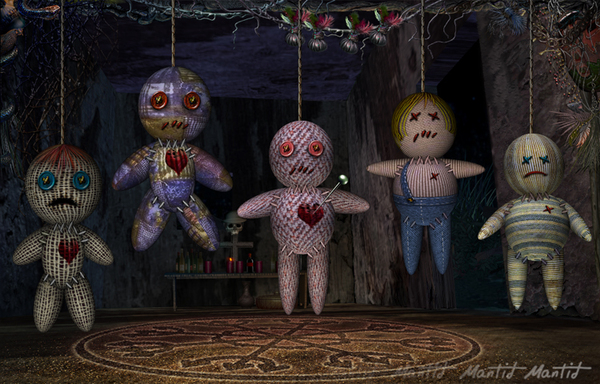
In systematically examining a great many indigenous psychotherapeutic methods and their relationship to modern psychotherapy, it becomes clear that there are five major characteristics that separate the two variants from one another.
The first is concerned with role and influence within the general community; having been reduced to operate within a denomination of scientific inquiry known as medicine, the modern physician enacts only a marginal influence upon the patient, and then only to heal him or her of a physical or mental ailment with the use of therapeutic agents like drugs. On the other hand medicine men or healers were more actively involved in the community because their experience of the world was deeply rooted in the belief that cosmogony and history were inexplicably associated with collective health and general wellbeing. A holistic and animistic view also meant that one could be multifarious in their concerns and occupation; it was not uncommon for healers to be chieftains, magicians, and priests, or all of these highly illustrious professions together. “It is an insult to the medicine man to call him the ancestor of the modern physician. He is that, to be sure, but he is much more, namely the ancestor of most of our professions,” says Henry Sigerist in his A History of Medicine (1951).
Another difference involves the fundamental reasoning behind the therapeutic method. In modern medicine the patient places his or her faith in various medications that have been prescribed by a doctor to shroud symptoms caused by an imminent pathogen or eradicate it altogether. The advancements in the scientific understanding of human biology and physiology over the last few centuries have certainly made these healing techniques viable. Primitive psychotherapy, however, employed forms of suggestion and an authoritative, undisputed belief in the healer’s persona as well as confidence in his natural and supernatural abilities to heal maladies. According to Alphonse Maeder (1963) there were three elementary types: lay healers, magicians or wizards, and religious healers or tribal priests. The first breed treated their patients rationally or through means not completely unfamiliar to our contemporary ‘Western” logic, the second by means of suggestion, and the third through the unconscious projection of the Saviour archetype or any archetype of individual or collective salvation.
The third point has to make do with tuition and accreditation. The twenty-first century physician acquires full rights to practice after satisfying certain requirements at institutions called universities whilst the medicine man attains his “professional” status through initiatory rites that are psychopathological in nature and are aimed at familiarizing their candidate with the tribe’s collective knowledge and pastoral traditions. An article by Erwin H. Ackerkneckt in the Bulletin of the History of Medicine entitled “Problems of Primitive Medicine” recognizes three types of healers: the non-inspirational medicine man, the inspirational medicine man, and the true shaman. Non-inspirational types depend on psychedelic substances or fasting to facilitate visionary experiences through which the “cure” might be bequeathed, inspirational types on hypnotic procedures or trance states, and true shamans who attain their supernatural abilities by voluntary subjecting themselves to a succession of great hardships.
A further discrepancy between indigenous healing and modern psychotherapy is the former’s almost exclusive dependence upon an empirical model of therapy that is psychological in nature. In a culture where material and spiritual planes like mind-body were often blurred and frequently confused it makes perfect sense that sicknesses of different etiology would be classed and treated using the same approach.
Fifth and last of these characteristics is the emphasis on the individual and/or collective. Whereas the psychotherapeutic method in the developed countries exhibits a preference for confidential one-on-one consultations and medical procedures the indigenous method is conducted within a collective ceremonial milieu, often with religious or theological overtones. In many ways indigenous therapy is a public event open to relatives, friends, and even the patient’s whole tribe.
Some of the therapeutic methods we’ve looked at, their place of origin, and their period of emergence are listed below:
(1) Disease-object intrusion appears to have emerged from the Old World (Africa, Asia, and Europe) during the Palaeolithic period.
(2) Soul loss evolved in Siberia during the Palaeolithic period.
(3) Spirit intrusion appears to have sprung forth from Western Asia at the end of the Pleistocene epoch.
(4) Breach of taboo emerged from the Old World and is fairly recent in comparison to other indigenous therapeutic methods.
(5) Sorcery, voodoo, and black magic are widespread amongst indigenous populations and their chronological origin is indeterminate.









